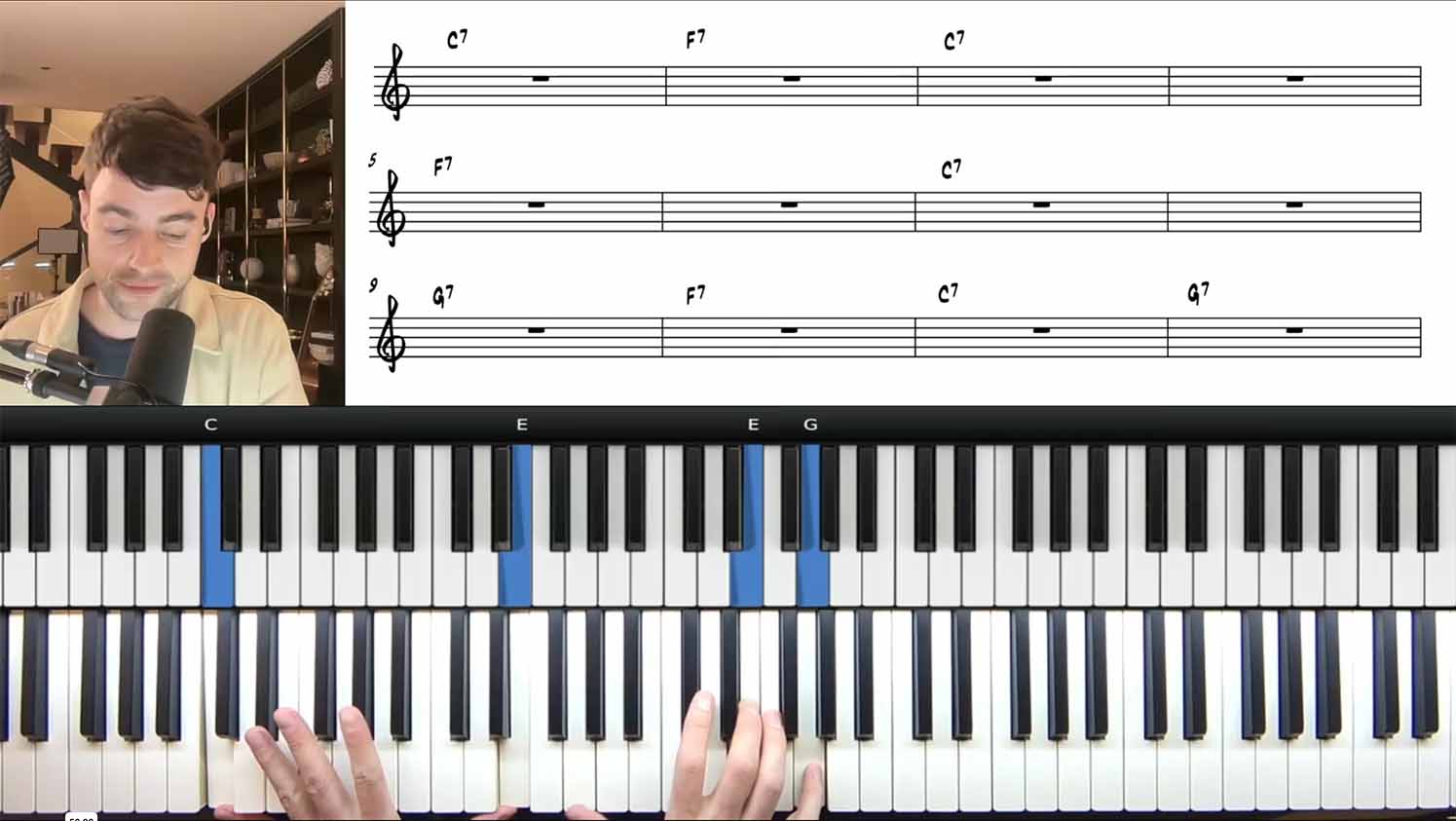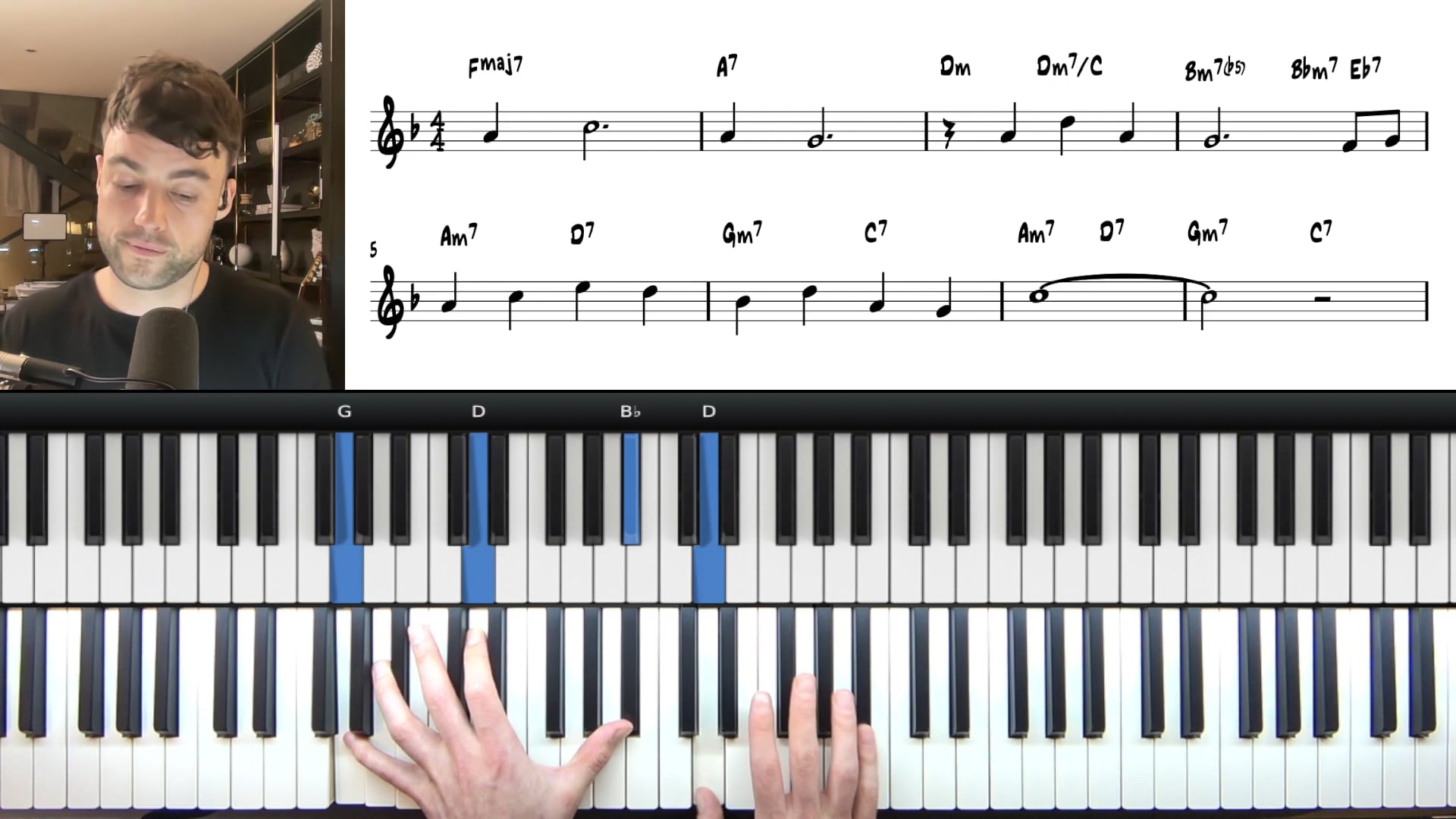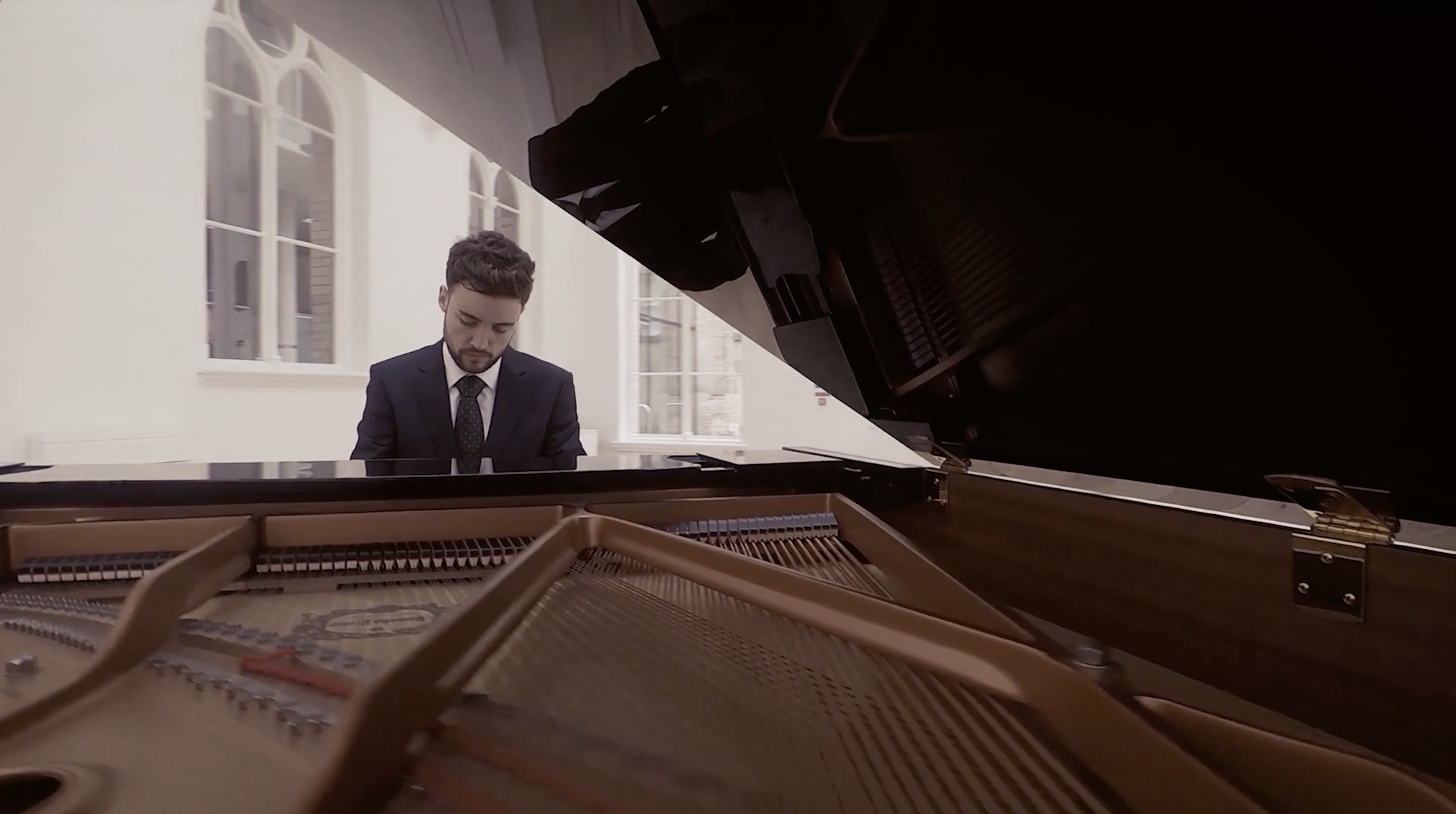

Hayden Hill
Hayden founded PianoGroove in 2015 with the goal of making the world a more musical place. He shares his love for jazz piano through his online courses and manages the community area of PianoGroove.
Live Seminar Resources
Live Seminar Resources
PDF Downloads
- James Booker Spotify Playlist
Join PianoGroove Pro to access all downloads and learning resources.
Download theory supplements, midi files, chord changes and full note-for-note transcriptions of every lesson.
- Slow Blues Shuffle Playlist
Join PianoGroove Pro to access all downloads and learning resources.
Download theory supplements, midi files, chord changes and full note-for-note transcriptions of every lesson.
Related Lessons
Seminar Description
Seminar Description
Slow Blues Piano & Blues Shuffle Techniques
Welcome to this in-depth seminar on slow blues piano, where we explore the essential techniques and concepts that define this timeless style. In this lesson, we focus on the slow blues form, blues shuffle patterns, and key improvisational techniques used in blues piano. We also highlight the influence of legendary New Orleans pianist James Booker and how his unique style can inspire your own playing.
By the end of this session, you will have a solid understanding of slow blues fundamentals, including left-hand rhythm patterns, melodic fills, and improvisation using the blues scale.
Understanding Slow Blues & the 12-Bar Form
The slow blues is rooted in the classic 12-bar blues form. This simple yet powerful chord progression provides the foundation for countless blues songs. We begin by outlining the structure using basic 7th chords, ensuring that you can navigate through each section smoothly.
One key element of slow blues is the use of suspended triads and plagal cadences (moving from the IV to I chord), which add harmonic tension and resolution. These are commonly used as fills and transitions within the form, adding color to your playing.
Left-Hand Rhythm & The Blues Shuffle
A defining characteristic of blues piano is the rhythmic groove established by the left hand. We explore two main approaches:
- Traditional slow blues left-hand patterns: Root-based movements combined with 10th intervals for a fuller sound.
- Blues shuffle left-hand patterns: A rolling motion between root, 5th, and 6th, creating a swinging feel.
One effective technique is to add the 4th of the chord momentarily before resolving back to the root. This small adjustment makes transitions between chords smoother and adds more momentum to the rhythm.
Improvisation & The Blues Scale
Improvisation in the slow blues is centered around the C minor blues scale and the C major blues scale. The interplay between these scales creates the classic blues tension between major and minor tonalities.
- C minor blues scale: C – E♭ – F – F# – G – B♭ – C
- C major blues scale: C – D – E – G – A – C
A key improvisational technique is the use of grace notes and slides—particularly when moving from the minor 3rd to the major 3rd, which gives the blues its expressive, soulful sound.
Additionally, we introduce fourth interval melodies inspired by James Booker. These modern, open-sounding licks add variety and excitement to your improvisation.
The James Booker Left-Hand Groove
James Booker’s left-hand technique is a powerful tool for slow blues piano. This approach involves:
- Playing tenths in the left hand
- Flicking into the minor third before resolving to the chord
- Using rootless voicings to create a richer harmonic texture
This technique requires careful coordination between both hands but significantly enhances the depth of your blues playing.
Turnarounds & Endings
A well-executed turnaround is essential in blues piano. One effective turnaround we cover follows this sequence:
- C – C/E – F – F#dim7 – C/G – G7
- C – C7 – F7 – F#dim7 – C/G – G7
This progression creates a strong resolution back to the top of the form. Additionally, variations using diminished chords and chromatic passing tones help create a smooth transition between phrases.
5 Key Practice Tips
- Master the 12-bar form – Internalize the chord progression and recognize common patterns.
- Focus on left-hand independence – Develop a steady rhythm to provide a strong foundation for improvisation.
- Blend major and minor blues scales – Experiment with both to create expressive solos.
- Use grace notes and slides – These small details make a huge difference in the authenticity of your playing.
- Listen to slow blues recordings – Study artists like James Booker to absorb the nuances of the style.
By incorporating these techniques into your practice routine, you’ll develop a deep, authentic blues sound. Whether you’re playing solo blues piano or accompanying others, mastering these fundamentals will give you the confidence to express yourself fully in the blues style.
Happy practicing! 🎹





